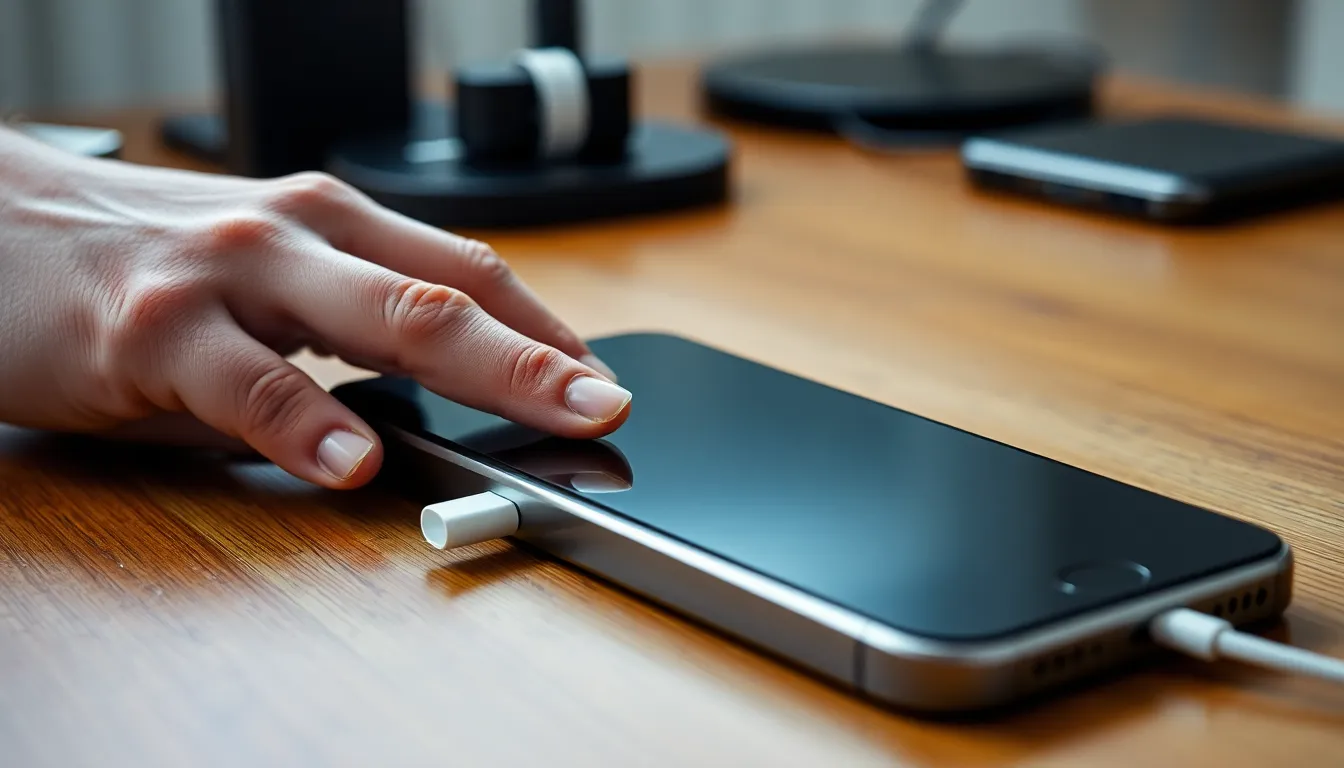Table of Contents
TogglePicture this: you’re ready to conquer the day, but your trusty iPhone decides to play hard to get. It’s like a stubborn toddler refusing to leave the playground. Frustrating, right? When that familiar Apple logo doesn’t grace your screen, it leaves you wondering if it’s time to call in the tech cavalry or if it just needs a little TLC.
Common Reasons Why Your iPhone Won’t Power On
Many users encounter difficulties when their iPhone fails to power on. Several factors contribute to this problem, which can often be resolved with simple troubleshooting.
Battery Issues
Battery problems frequently prevent an iPhone from turning on. Drained batteries result in no power. Users may find that a malfunctioning charging cable or adapter leads to insufficient charging. It’s advisable to check connections and try different chargers. Aging batteries, particularly those over two years old, may not hold a charge effectively. In such cases, replacing the battery can restore functionality.
Hardware Problems
Hardware issues can also stop an iPhone from powering on. Physical damage, such as a cracked screen or water exposure, often affects internal components. Faulty hardware like the power button or logic board may create problems. Additionally, loose connections inside the phone can obstruct power flow. Running diagnostics with a trusted technician can pinpoint these hardware-related issues.
Troubleshooting Steps to Try

When an iPhone won’t power on, several simple steps can help troubleshoot the issue.
Force Restart Your iPhone
Performing a force restart often resolves minor software glitches. Press and quickly release the Volume Up button, followed by pressing and quickly releasing the Volume Down button. Then, press and hold the Side button until the Apple logo appears. This process can refresh the device’s operating system. Users frequently find this method effective, especially if the device appears frozen.
Charge Your iPhone
Charging the iPhone can resolve issues related to battery depletion. Connect the device to a working charger and leave it for at least 15 minutes. Sometimes, a completely drained battery takes time to display the charging icon. Check the charging cable for frays or damage. If possible, test with another charger to rule out faulty equipment. This approach often brings devices back to life.
Check for External Damage
Inspect the iPhone for signs of physical damage that may affect functionality. Look for cracks on the screen or dents on the casing, as these may indicate internal issues. Loose connections can arise from drops or impacts. Examine the charging port for debris or obstruction. Cleaning it gently can restore the device’s ability to charge. Identifying and addressing external damage plays a key role in resolving power issues.
When to Seek Professional Help
Knowing when to seek professional help is crucial for resolving power issues with an iPhone. Certain symptoms indicate that expert intervention may be necessary.
Apple Support Options
Apple offers several support options for users facing issues with their devices. Customers can visit the Apple Support website to access troubleshooting guides and articles. Additionally, users can schedule an appointment at an Apple Store or an authorized service provider. Apple’s support team provides both in-person and remote assistance, addressing a range of technical problems. Utilizing Apple’s diagnostic tools can lead to accurate identification of hardware failures. When proper guidance is needed, reaching out to Apple’s technical support can facilitate timely solutions.
Third-Party Repair Services
Third-party repair services present a viable alternative for iPhone users. Many independent repair shops specialize in diagnosing and fixing various Apple device issues. These services often offer quicker turnarounds compared to official channels. Customers should research local providers, checking reviews and warranty policies. Transparent pricing helps users understand potential repair costs before committing. Trustworthy repair technicians can resolve hardware concerns that hinder power functionality without the need for brand-specific resources. Choosing experienced professionals minimizes the risk of further damage, ensuring device longevity.
Preventive Measures for Future Issues
Taking proactive steps can reduce the risk of encountering power issues with an iPhone. Regular maintenance and best practices help ensure the device remains operational.
Regular Software Updates
Keeping the iPhone’s software current helps maintain optimal performance. Software updates often include bug fixes that resolve issues affecting device functionality. Users can enable automatic updates in settings to simplify the process. Installing updates promptly addresses security vulnerabilities that may also impact performance. Regular checks for available updates create a smoother user experience and prevent potential problems.
Battery Care Tips
Managing battery health significantly affects an iPhone’s ability to power on. Avoid extreme temperatures which can damage battery performance. Charging the device with certified cables ensures efficient power transfer. Users should refrain from letting the battery drop below 20% frequently, as deeply discharging can shorten the battery lifespan. Regularly rebooting the iPhone can also help improve battery health by recalibrating software readings.
Experiencing an iPhone that won’t power on can be frustrating but understanding the common causes and solutions can make a significant difference. From battery issues to hardware malfunctions there are several factors to consider. It’s essential to try simple troubleshooting steps like force restarting and checking the charging cable before seeking professional help.
If the problem persists consulting a technician might be the best course of action. Taking preventive measures such as keeping the software updated and managing battery health can help avoid future issues. With the right approach users can restore their iPhone’s functionality and enjoy a seamless experience once again.




